| 1 | Greater black krait |
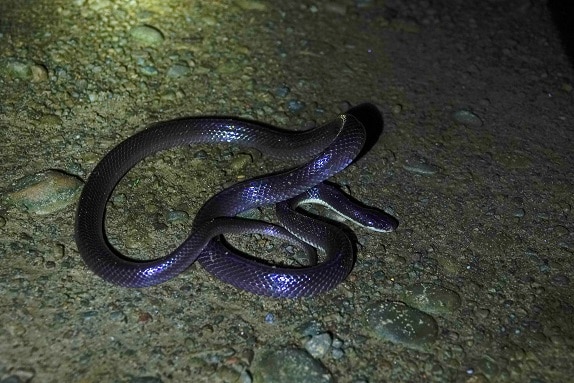
If any family becomes exponentially more dangerous because of its nocturnal lifestyle, then it’s the southeast Asian kraits (Bungarus family). The greater black krait inhabits northeast India, Bhutan and Bangladesh. Its habitats are varied, including meadow, village, plantation and forest. It’s slow-moving, and its venom combines neurotoxic, myotoxic and haemotoxic ingredients.
What makes Bungarus niger particularly treacherous is its lack of patterns. While banded kraits are yellow-black, and many-banded kraits have many bands, Bungarus niger is pure black. The pale white is confined to their belly and chin, which you can barely see.
It’s easy to miss this snake, even if your torch beam is shining directly on its back. In the dark hills of Bhutan, you never know when a greater black krait is around the corner. Daylight is your only safety shield. Bungarus niger is a rare species to combine two major causes of death. It can kill victims via kidney failure, and also via neurotoxic fates like respiratory paralysis. A study on 5 Bangladeshi victims found 2 deaths, and 3 eventual recoveries.
| 2 | Central American bushmaster |
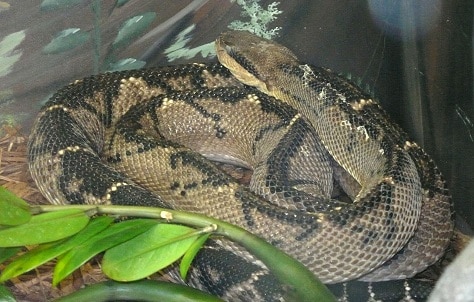
A huge venomous snake of Costa Rica, Panama, and southern Nicaragua, which mainly eats mammals like spiny rats. This forest creature has many mystical gifts to bless you with: nausea, swelling, faintness, necrosis and heavy sweating.
Lachesis stenophrys measures 2-3 metres, maximum 3.6m, and are slow ambushers rather than hyperactive speed freaks. You can easily avoid a savage bite if you spot them, but first you have to accomplish that.
Underestimate this nocturnal snake at your peril. One of the main differences to their cousin is that Central American bushmasters are darker, which comes into play when they’re most active. This species is long enough to trip over on a path, after not noticing them in the darkness. Lachesis stenophrys isn’t aggressive, only striking after people get in their face. But in the stifling darkness of the jungle, as people stumble around in a rising panic, this could easily happen accidentally. This is not joke, as at a record of 3.6 metres, Central American bushmasters are the 4th longest venomous snake in the world.
| 3 | MacClelland’s coral snake |
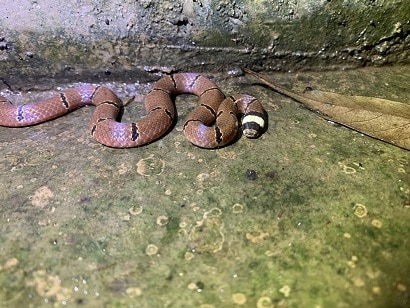
A venomous coral snake found in Thailand which few have heard of. While the American Micrurus coral snake family has 80+ members, the Sinomicrurus family has just 9. MacClelland’s coral snake lives mainly in central and northwestern Thailand, and averages at 40-80cm. They have a distinctive brick red body, with a black-white neck scarf like they’re about to migrate to Norway for the winter.
This species is easily recognisable, but there’s a small flaw: they move most when visibility is nil. MacClelland’s coral snake is fully nocturnal, a creature that never appears amid glowing sunlight and thrives amid the chilly illumination of the moon. This species gets moving when king cobras and monocled cobras are sleeping, seizing its chance for action.
Meanwhile, their neighbour Pope’s pitviper is also heavily nocturnal, but this is a branch clinger, while MacClelland’s coral snake sticks to the leafy floor. Make no mistake that every level of a Thai forest features venomous snakes after nightfall, waiting for intruders to stumble in. MacClelland’s coral snake is relatively docile, but its venom is severe and potentially lethal. One man died from respiratory paralysis within 8 hours, and the venom accelerates the heartbeat to dangerous levels.
| 4 | Mexican west coast rattlesnake |
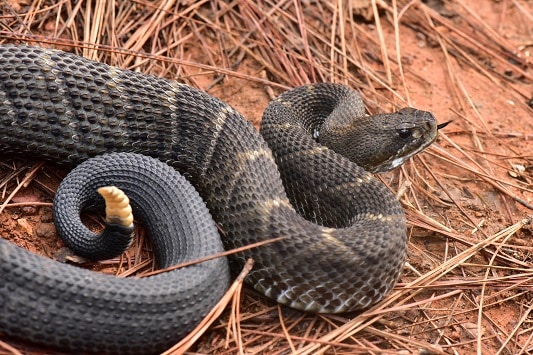
One of the largest rattlesnake species, at a record of 204.5cm, versus 91.2cm for a tiger rattlesnake. This species lives down a swathe of the Mexican west coast, without crossing the southern US border. Dry, open hills covered with thorn bushes are their forte, as is travelling in the complete blackness of night. Their pupils are vertical, and they have the two usual heat-seeking pits, granting them infrared vision. Mexican west coast rattlesnakes have an anticoagulant venom, causing excessive bleeding, while pushing your heartrate to 136BPM.
Crotalus basiliscus lives exclusively to the west of Mexico’s Sierra Madre Occidental mountains. Cross this range and you have officially entered their realm, where you play by their rules. The Mexican west coast is an expansive place, with a mixture of wide rocky plains, distant green hills, and swaying palm trees. It’s a sweeping corner of the world with many places to explore, yet these lands are also host to a rattlesnake landmine.
When night falls, the breathtaking views are replaced with suffocating dread, the knowledge that a rattlesnake could be just about anywhere. Only a car is safe. Camping till morning could attract them, while escaping on foot could play into their hands. Crotalus basiliscus has a relatively mild venom, but the venom yield is high. Another name for this species is the Basilisk rattlesnake.
| 5 | Wilson’s montane pitviper |
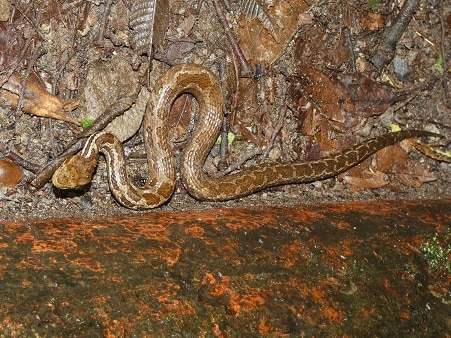
This species lives in high altitude areas of Honduras and El Salvador, possibly eastern Guatemala. Wilson’s montane pitviper inhabits forests at up to 3491 metres in altitude, and measure 60-80cm. They don’t kill scores of people, but have a haemotoxic venom which destabilises red blood cells and weakens capillary walls. They’re a slow-moving species which sticks to the ground and is heavily nocturnal, searching for small mammals and lizards. With vertical pupils with fewer cones and extra rods, and their namesake heat seeking pits, this species is fully adapted to nighttime life.
This causes their forests to completely transform. By day, you could just about tread through. The montane pitvipers will be sleeping and motionless by their tree trunks. The bright colours of coral snakes will stick out like a sore thumb. By night, the forest becomes such a forbidding place that you might be unable to summon the courage up to enter.
The vipers are not only slithering around, potentially crossing your path, but impossible to spot. Whatever moonlight could illuminate the forest floor is blocked out by the thick canopies. Despite our technology, despite our torches and mobile phones, the forest realm of Cerrophidion wilsoni is a place you enter at your own risk.
| 6 | Taylor’s cantil |
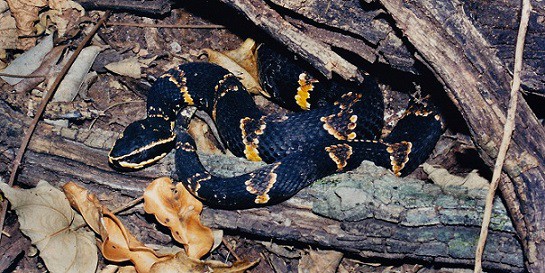
You can tell this pitviper is nocturnal with a single glance. Its body is pitch black, overlaid with ornate gold bands, which allow them to effortlessly blend with dry woodlands at midnight. Taylor’s cantil lives in northeast Mexico, and lives just over the US border, but doesn’t quite reach Texas. Their venom is haemotoxic, bursting blood vessels and disrupting clotting simultaneously, for an unstoppable one-two of spontaneous bleeding.
Taylor’s cantils have a reputation for aggression, although their permanently angry face may contribute to these rumours. Dry woodland is their forte, occasionally dry roads and villages next door. Night-time is when all their serpent senses come alive and allow them to hunt, prowl and explore. Taylor’s cantil rarely moves by day, like their Mexican cantil cousin further south. At night, it’s very easy to stumble into one by accident, whether on a road or a woodland trail.
Luckily, Taylor’s cantils never invade households, unlike a cobra. You’ll be safe and sound in your bed, but the knowledge that Taylor’s cantils are prowling around just outside your window may be worst. This snake belongs to the same Agkistrodon family as cottonmouths and copperheads.
| 7 | Common lancehead |
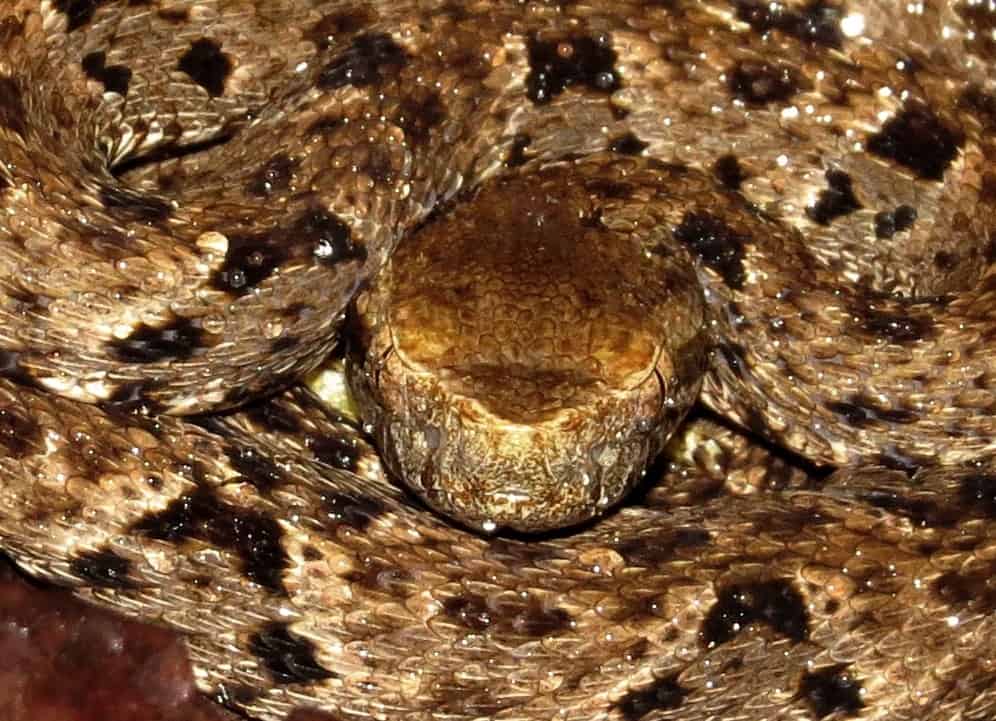
The species responsible for the most venomous snakebites in Brazil, and the wider Amazonian rainforest region. A 5 year study from Brazil’s central Amazon region proved that this species is overwhelmingly nocturnal. 79% of encounters were by night, and 21% by day. Their most active hours were 18:00 to 22:00, after which activity fell off a cliff. 2 lanceheads were radiotracked, and found to almost always be stashed in deep shelter during the day.
This liking for the early hours of night is partly why common lanceheads (Bothrops atrox) cause hundreds of bites per year. Their camouflage is immense, like the texture of a mulchy leafbed has been transferred to their scales. Common lanceheads are also irritable, and will attack rather than flee, occasionally giving you an ear-piercing hiss as a generous warning. Bothrops atrox venom assaults the kidneys rather than the lungs.
While forests are their main domain, common lanceheads creep around villages after dark as well, whether in hammering rain or under starlight. This is an exceedingly dangerous snake, and their nocturnal nature is one piece of the puzzle.
| 8 | Hagen’s pitviper |
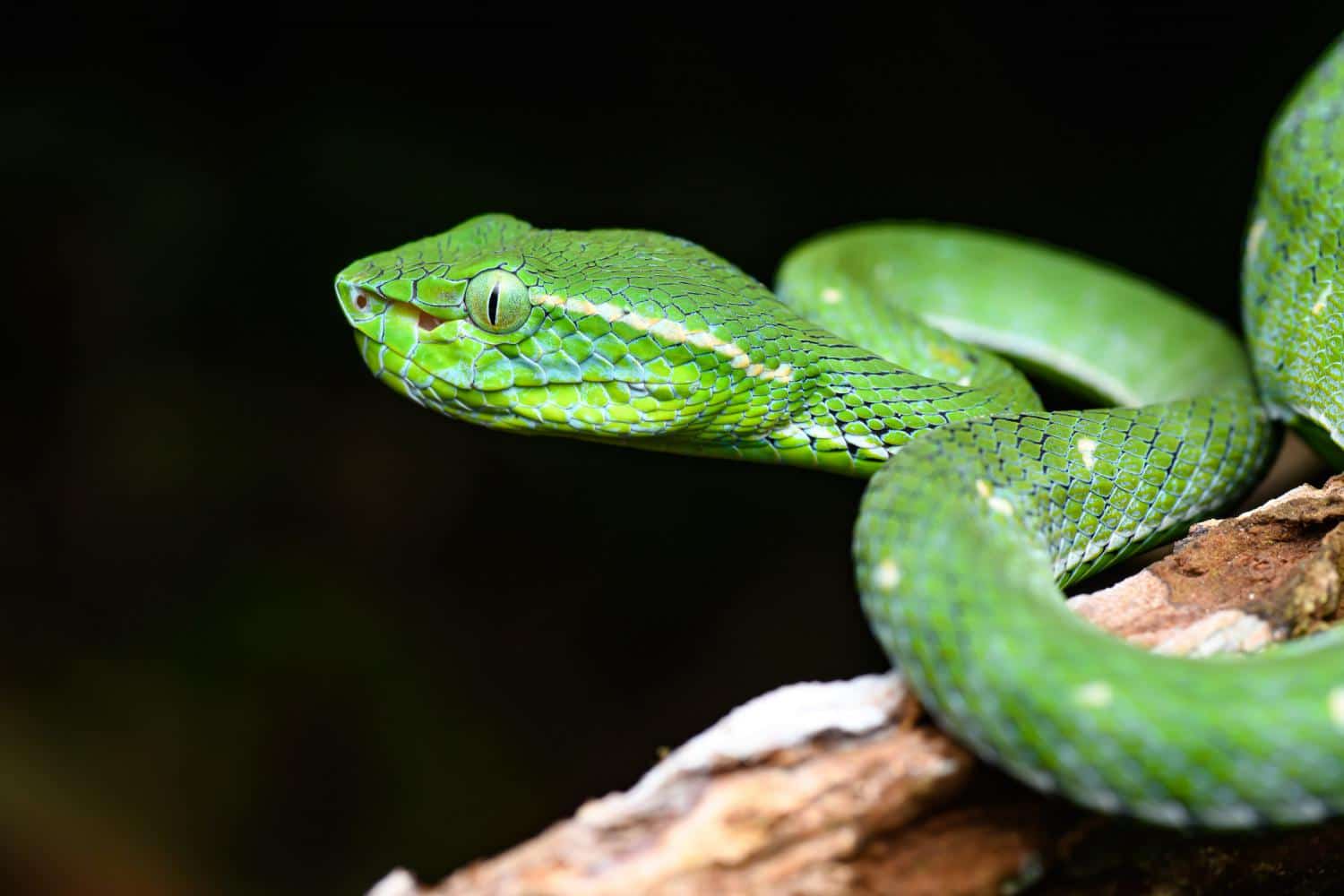
This venomous pitviper lives in extreme southern Thailand, peninsular Malaysia over the border, and Sumatra. If you encounter Haagen’s pitviper during the day, they’ll almost certainly be doing nothing. They’ll probably be coiled around a branch, in the forests they call home, 1-2 metres above ground. At night, they may be coiled, but flecking their tongue and subtly shifting their body in preparation for ambush. They can be carefully crossing branches, or moving steadily across the forest floor to find a new position.
Trimeresurus hageni is a heavily nocturnal pitviper which reaches 123cm, and has a venom rich in metalloproteinases, which cause both necrosis and spontaneous bleeding. They inhabit humid forests, usually below 600 metres in altitude. Their mere presence causes forests in southern Thailand to be a risky place to enter. At night, the risk quadruples.
Hagen’s pitviper is like a vampire in that they can’t stand daylight, which robs them of their powers. It doesn’t burn their skin and instantly send them down to the underworld, but saps their energy, forcing them into a lethargic state of immobility, counting down the hours until the sun sets. When nighttime arrives, it’s like a weight is off their shoulders. Their reactions sharpen, their eyes gain a new level of cunning, and Hagen’s pitviper reaches the peak of its serpent powers.
| 9 | Painted coral snake |
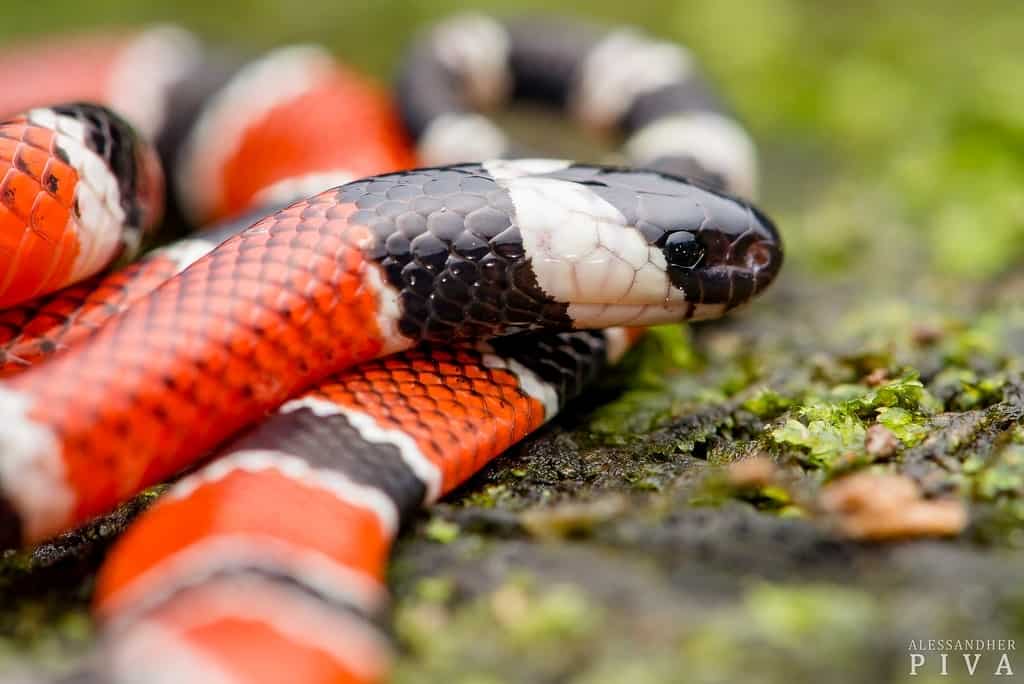
This neurotoxic snake lives along Brazil’s southeast coast, including near São Paulo (Brazil’s most populous city). This is a steady, patient forest dweller which averages at 65-85cm, and has colours with 2 black bars, with a white sandwiched between, and longer red spaces. The painted coral snake moves mostly by night, and is found on the forest floor, rarely on branches. By day they hide below shelters like logs, until night falls, and the entire forest clarifies in all its detail, and they embark on their nightly quest for prey, with 52% being fellow snakes.
Micrurus corallinus is a slightly safer nocturnal snake than most of this list. With their bright colours, designed purposefully to warn predators, they show up easily in the beam of your torch (unless the battery runs out). Likewise, they’re barely aggressive, and don’t use their nocturnal cover to attack humans tiptoeing around. Micrurus corallinus causes less than 1% of Brazilian snakebites, and that’s while topping the tables for coral snake bites. The danger happens when they’re picked up and harassed.
Not all species with this colour code are venomous; there are several coral mimics like the São Paulo false coral snake. To be safe, avoid touching any red-black-white snake.
| 10 | Many-spotted catsnake |
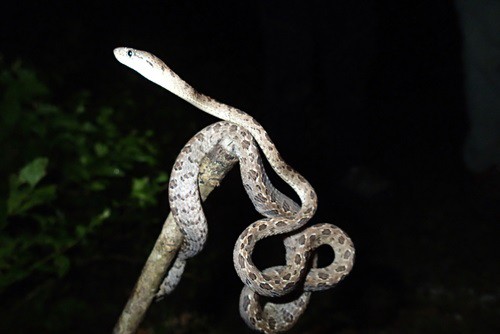
This Hong Kong species is most likely to be photographed on a branch, vertical pupils staring madly, with a completely black background. Many-spotted catsnakes are common on the island, plus a swathe of Vietnam and Cambodia. They have a mild venom which is poorly researched, but may be capable of swelling a hand up, if you leave them attached for too long.
As night falls, Hong Kong flips a switch. By day, the streets, parks and drainage ditches are full of Chinese cobras. These vanish when the sun sets, to be replaced with many-spotted catsnakes hopping between branches. They also appear in urban areas; Boiga multomaculata is a common species to meet on a relaxing night-time stroll through the streets of Hong Kong. Boiga multomaculata is easily recognisable, with their grey spots and white underscales. They’re one of the shorter Boiga catsnakes, at an average of just 70cm.
Their relative the black-headed catsnake (Boiga nigriceps) turned out to have secret neurotoxins, with genes encoding three-finger toxins. Many-spotted catsnakes aren’t well researched, and could have the same. Boiga multomaculata won’t kill you, but avoid a bite if you can, if you’d rather not lose a day to a hospital visit.